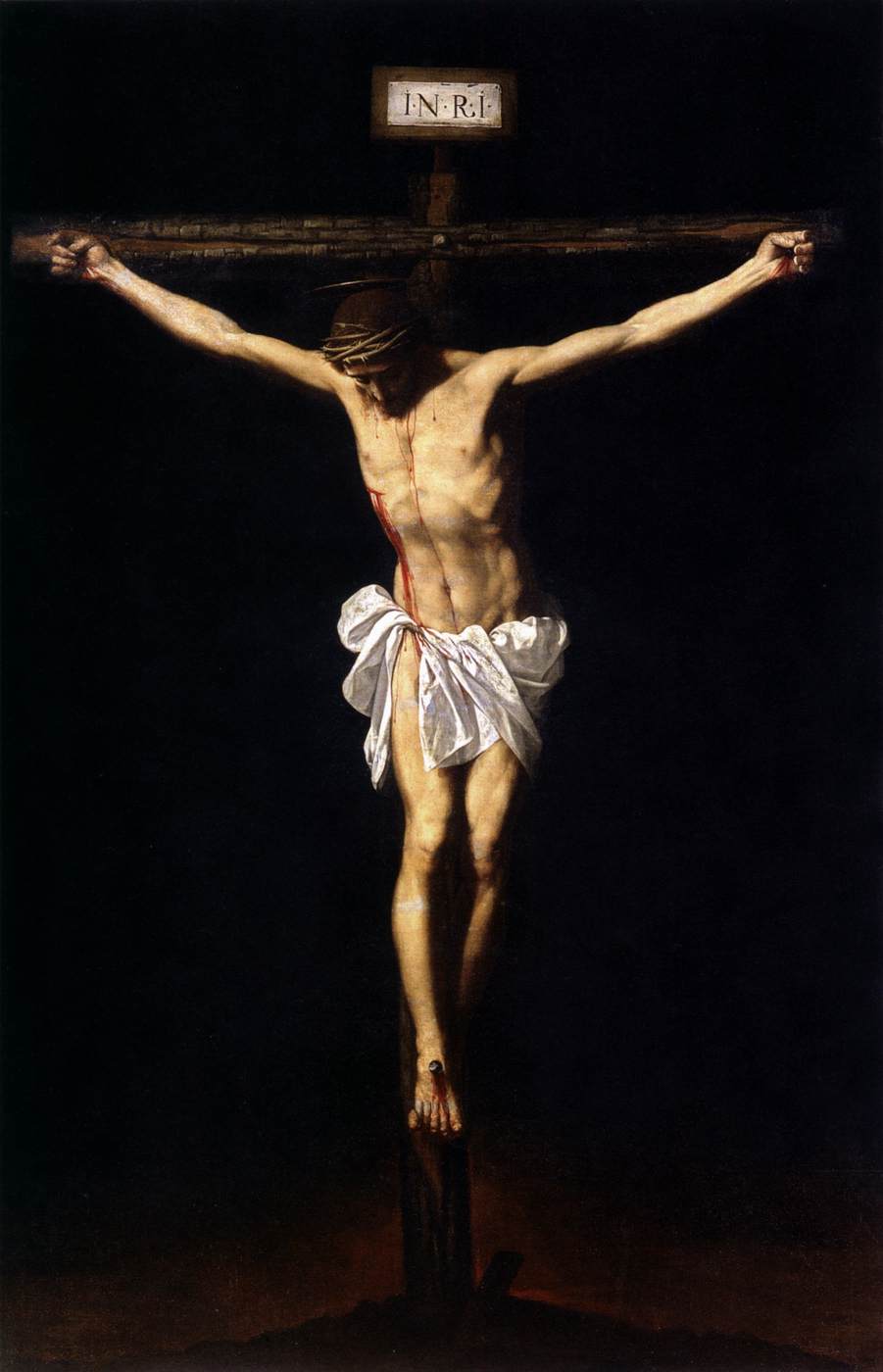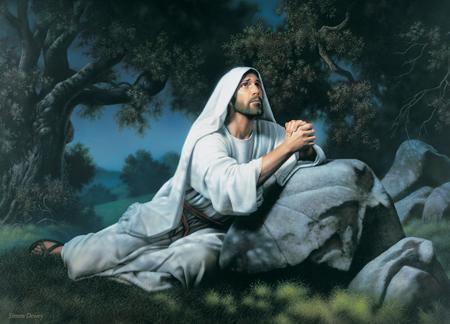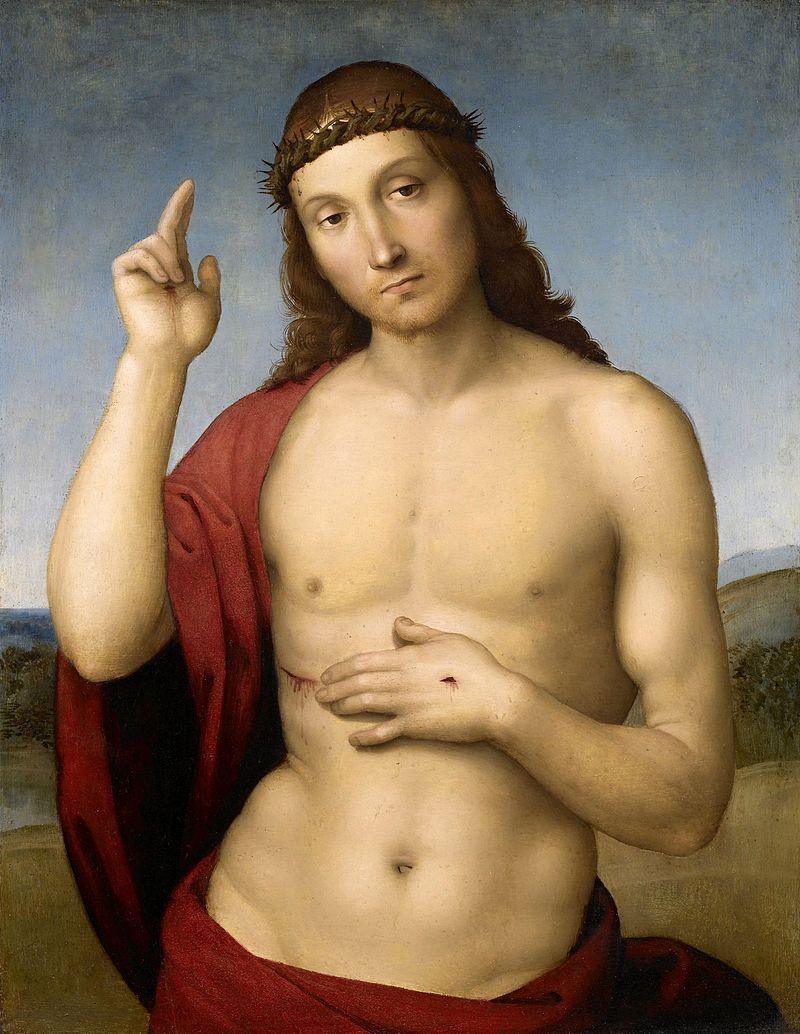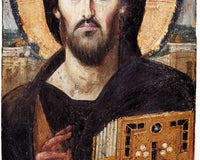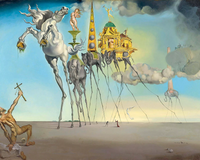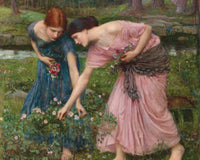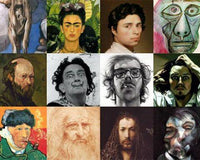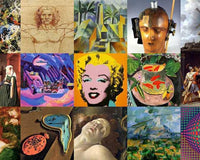There are mysterious reasons why great masterpieces have inspired dozens of conspiracy theories and improbable conjectures.
Sometimes the hidden details in these famous paintings are extremely clever, perhaps revolutionary.
Enter now into this fascinating world of 10 great masterpieces from our history that hold secretive mysteries between the canvas and the observer.
Secrets of The Last Supper - Leonardo Da Vinci

The Last Supper is Leonardo Da Vinci's visual interpretation of an event narrated in the four Gospels (the books of the Christian New Testament).
The night before Christ was betrayed by one of his disciples, the master gathered them to eat together, wash their feet, and announce what would happen. While they ate and drank, Christ gives the disciples explicit instructions on how to eat and drink in the future, in his memory. It was there that the first celebration of the Eucharist was born, a ritual that still remains among Christians.
The Last Supper describes the moments after Christ dropped a bombshell, announcing that a disciple would betray him before dawn. The twelve apostles react to the news with varying degrees of shock.
Leonardo da Vinci had not worked on such a large painting and had no experience in the medium of murals under the fresco technique. The painting was done using experimental pigments directly on dry plaster wall and, unlike frescoes, where pigments are mixed with wet plaster, the work has not withstood the test of time well.
Even before the masterpiece was finished, the paint was peeling off the wall, and Leonardo had to repair it. Over the years, it has crumbled, been vandalized, bombed, and restored. Today we are likely seeing very little of the original work.
If you have read The Da Vinci Code by Dan Brown, you will know that this mural by Leonardo da Vinci from the late 15th century has been the subject of much speculation.
Brown suggested that the disciple to the right of Jesus is actually Mary Magdalene disguised as John the Apostle. He also suggests that the "V" shape formed between Jesus and "John" represents a female uterus, implying that Jesus and Mary Magdalene had a child together.
Art historians, however, are skeptical of this conjecture, which at the time gained many followers. Critics suggest that John's appearance is feminine simply because that is often how he was represented.
But Italian musician Giovanni Maria Pala discovered a much more compelling secret message. He claims that Da Vinci hid musical notes in "The Last Supper" that, when read from left to right, correspond to a 40-second hymn that sounds like a requiem.
In 2007, Pala created a melody from the notes that were hidden in the scene. You can listen to this supposed melody that Da Vinci left hidden here.
Order a replica of The Last Supper made by professional artists.
Secrets of The Creation of Adam - Michelangelo

"The Creation of Adam" is probably the most famous of the nine biblical panels that Michelangelo painted on the ceiling of the Sistine Chapel. But did you know that the scene might contain the image of a hidden brain?
Michelangelo was an expert in human anatomy. At 17, the great Renaissance artist had a job dissecting corpses in the church cemetery. According to neuroanatomy experts Ian Suk and Rafael Tamargo, the painter placed some carefully hidden illustrations of certain body parts on the ceiling of the Sistine Chapel.
If you look at the shroud surrounding God in "The Creation of Adam," you will see that Michelangelo might reproduce an anatomical illustration of the human brain.
Suk and Tamargo believe that Michelangelo intended the brain to represent the idea that God was endowing Adam not only with life but also with knowledge and the ability to reason.
Order a replica of The Creation of Adam made by professional artists.
Secrets of The Separation of Light from Darkness - Michelangelo

"The Creation of Adam" was not the only panel in the Sistine Chapel where Michelangelo hid anatomical illustrations. According to Suk and Tamargo, in "The Separation of Light from Darkness," you can find a representation of the human spinal cord and brainstem in the center of God's chest leading to his throat.
While it may surprise the viewer the amount of exposed skin displayed on the ceiling and wall, originally there was much more in the work. Shortly after Michelangelo's death, Pope Paul III ordered that the genitals of saints and martyrs be covered. Over 40 alterations were made covering the complete nudity of the female figures. The chosen artist (Daniele dal Volterra) would forever be known as "Il Braghettone," the pants maker or the painter of trousers.
Order a replica of The Separation of Light from Darkness made by professional artists.
Secrets of Café Terrace at Night - Vincent Van Gogh

At first glance, the oil painting by Vincent van Gogh from 1888 appears to be just what the title describes: a picturesque café terrace in a colorful French city. But, in 2015, Van Gogh expert Jared Baxter proposed the theory that the painting is actually the artist's version of "The Last Supper."
A detailed study shows a central figure with long hair surrounded by 12 individuals, one of whom seems to be slipping into the shadows like Judas. There also appear to be small hidden crucifixes throughout the painting, including one above the central figure resembling Jesus.
A religious allusion would not be too out of place for Van Gogh. Before dedicating his attention to painting, the famous Dutch artist wanted to "preach the gospel everywhere," and his father, Theodorus van Gogh, was a pastor of a Dutch Reformed church. Around the time he was working on Café Terrace at Night, Van Gogh wrote to his brother, Theo van Gogh, explaining that he had a "tremendous need for, I would say the word, religion," with direct reference to the painting.
Order a replica of Café Terrace at Night made by professional artists.
Secrets of The Prophet Zechariah - Michelangelo

Part of Michelangelo's work in the Sistine Chapel may have some fairly controversial hidden secrets. "The Prophet Zechariah," for example, looks like a mural of the eponymous prophet reading a book while two cherubs look over his shoulder.
But, upon closer inspection, it seems that one of the angels is "flipping the fig," which is when one puts their thumb between the middle and index fingers. Basically, it’s the ancient version of flipping the bird.
Rabbi Benjamin Blech of Yeshiva University told ABC News: "This may be the key to understanding Michelangelo's courage, Michelangelo's true feelings towards the Pope, and the fact that Michelangelo did not hesitate to present us with messages that could have been offensive."
There is also a palpable feeling that all this is part of Zechariah's fantasy. In a room full of imaginations, each occupant of the Sistine Chapel ceiling seems to be concerned about something; the power of perspective ensures that Zechariah's messages reach farther.
It's not just the fact that he is above the door, reading from his own work, which feels like establishing God's agenda.
Zechariah is perhaps one of the most interesting apocalyptic prophets, who predicted the end of the world or, as he would prefer to say, the day of the Lord. Michelangelo makes Zechariah capture the viewer with his emblematic figure.
Order a replica of The Prophet Zechariah made by professional artists.
The Mona Lisa - Leonardo Da Vinci

Leonardo da Vinci's 15th-century masterpiece is perhaps one of the most recognized works of art in the world, but there is much to observe in that mysterious smile.
Firstly, it is speculated that La Gioconda is pregnant, given the way her arms are placed over her belly and the veil around her shoulders, which women often wore during pregnancy in the Italian Renaissance.
But the most recent findings are in her eyes. In 2011, Italian researcher Silvano Vinceti claimed he found letters and numbers painted microscopically in them. He told the Associated Press that the "L" above her right eye likely represents the artist's name.
The meaning of the letter "S" that you see in her left eye and the number "72" below the arched bridge in the background are less clear. Vinceti believes that the "S" could refer to a woman from the Sforza dynasty that ruled Milan, meaning that the woman in the painting may not be Lisa Gherardini, as has long been believed.
As for the number "72," Vinceti argues that it could stem from the importance of numbers in both Christianity and Judaism. For example, 7 refers to the creation of the world, and the number 2 could refer to the duality between men and women.
Other secrets that The Mona Lisa hides and were recently discovered under X-rays:
- There is a lace hidden in the dress of The Mona Lisa
- The transparency of the veil shows that da Vinci first painted a landscape and then used transparency techniques to paint the veil on top.
- The work underwent a change in the position of the index and middle fingers of the left hand.
- The elbow was repaired due to damage caused by a stone thrown at the painting in 1956.
- The blanket covering Mona Lisa's knees also covers her stomach.
- The left finger was not completely finished.
- A stain in the corner of the eye and the chin are accidents of varnish, which counters claims that Mona Lisa was ill.
- And The Mona Lisa was painted on uncut poplar wood, contrary to other speculations.
Secrets of The Arnolfini Portrait - Jan van Eyck

When first observing the 1434 oil painting by Jan van Eyck, it simply seems to represent the merchant Giovanni di Nicolao Arnolfini and his wife.
But if you closely observe the mirror in the center of the room, you will notice that there are two figures entering the room. It is widely believed that one of them is Van Eyck himself. You will also be able to notice a Latin inscription with very elaborate writing on the wall above the mirror, which translates to "Jan van Eyck was here. 1434".
The Arnolfini Portrait, as the title says, was revolutionary in its time and the painting continues to fascinate us to this day. The entire image draws the viewer's attention to details that could be an important message or convey a veiled meaning.
Over the centuries, the work has been interpreted as a portrait of two newlyweds, with typical symbols of a nuptial event, starting with the symbol of fertility of the pregnant position of Constanza's body, which as we know was just a whim of the artist. In fact, the couple eventually had no children.
Other symbols of fertility include the red bed and carpet. The shoes that were on the wooden floor also had significance as a common wedding gift for a bride from a groom. The oranges symbolize fertility and love.
Order a replica of The Arnolfini Portrait made by professional artists.
Secrets of The Ambassadors - Hans Holbein the Younger

The most iconic painting by Hans Holbein the Younger often eludes correct interpretation. Jean de Dinteville and Georges de Selve (1533), also known as The Ambassadors, have been the subject of intense scrutiny by historians for centuries. The double portrait, proudly displayed in the National Gallery in London, remains a fascinating enigma within which every detail seems to suggest multiple meanings.
The artist's painting presents a rather notable illusion at its lower base. If you observe the distorted image at the bottom of the painting from right to left, a skull seems to appear anamorphic. Scholars believe the image is intended to be a reminder that death is always around the corner. When the skull is viewed from the right side of the image, the apparent distortion of the image corrects itself.
The painting is a tradition that depicts educated men with books and working instruments. The objects on the upper shelf include a celestial globe, a portable sundial, and various other instruments used to understand the heavens and measure time. Among the objects on the lower shelf are a lute, a flute box, a hymnal, an arithmetic book, and a globe.
Certain details of the work could be interpreted as references to contemporary religious divisions. The broken string of the lute, for example, may symbolize some kind of religious discord, while the Lutheran hymnal may be a plea for Christian harmony.
Order a replica of The Ambassadors made by professional artists
Secrets of The Old Guitarist - Pablo Picasso
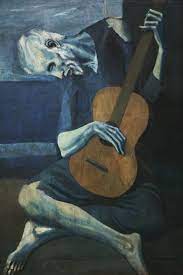
The haunting depiction by Pablo Picasso of an old man holding a guitar is one of the most revered works from his Blue Period.
However, in 1998, researchers used an infrared camera and discovered that there is another painting beneath it, which shows a woman. Now that the painting is fading, it is easier to see the woman's face above the old man's neck.
A study by the Art Institute of Chicago and an exhibition in 2001 at the Cleveland Museum of Art sought to decipher the intermingled images. The most obvious features include the head of a woman looking to the left and an outstretched arm with an open hand to the right. It is very likely that Picasso originally began to paint a portrait of a woman, who seems to be seated and in a bad mood or worry. Not much of this image is seen, except her face and legs.
The Old Guitarist is probably the most emblematic painting of Picasso's blue period when he lived in poverty and emotional turmoil. The ghostly presence of the mysterious image of the woman adds an element of mystery to this great work of the 20th century.
Secrets of Madam X - John Singer Sargent

In 1884, John Singer Sargent painted a portrait of the wealthy Parisian socialite Virginie Amélie Avegno Gautreau. He originally depicted the jeweled strap of her dress slipping off her shoulder, but the artwork scandalized the high society of the time.
The artist was forced to repaint the straps, change the name of the painting, and move to London to avoid public ridicule and criticism.
The painting, which initially debuted with that severe disapproval, but today is treasured as a beloved masterpiece in the history of Western art, is just one example of a work of art that gradually evolved from condemnation to celebration.
Much of the initial reception of a work is based on the tastes of society, standards of etiquette, and the values of the time, and as these attitudes change over time, the public may begin to see old paintings with a new perspective. Sargent's Madame X is perhaps one of the most dramatic examples of this trend, raising intriguing questions about what really defines the popularity of a work of art, its legacy, and acquired fame.
Order a replica of Madam X
Secrets of Primavera - Sandro Botticelli
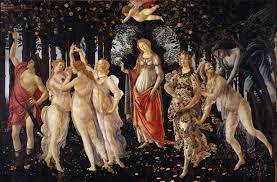
Critics question the specific meaning behind Primavera, the masterpiece by Sandro Botticelli. It is widely accepted that, on some level, the artwork is a celebration of the flower season and the fertility that the season brings.
On one hand, Botticelli's painting has secret delights for horticulture enthusiasts. Botanists have identified at least 200 different species of plants in "Primavera" that are presented with specific details.
The key to interpreting the composition of Primavera as a whole may lie in the sources of the painting, but there is no consensus on which were. Some parts seem to come from Ovid, who wrote about Chloris and her transformation, and from Lucretius, who in his poem "De rerum natura" touched upon some of the images seen in the painting. It may also have been inspired by "Rusticus," a poem celebrating rural life by Poliziano, a close friend of the Medici family.
Fortunately, our appreciation for the beauty of the painting transcends our difficulties in understanding it. The recent statement by Metropolitan Museum of Art curator Ian Alteveer about Jasper Johns' White Flag could easily fit with Botticelli's Primavera: "As I was excited about this piece, I realized that a work can be inscrutable and still you can love it."
In 1893, Aby Warburg, one of the foremost historians of Florentine art, published his groundbreaking study on Botticelli's spring. In his article The Birth of Venus and the Primavera of Sandro Botticelli, the scholar related the meaning of the painting to Ovid's Fasti, Virgil's Aeneid, and the texts of Lucretius and Poliziano. According to Warburg, the three figures on the right visualize a passage from Fasti and show the moment when Zephyrus abducts the nymph Chloris, who transforms into Flora. This source, however, only explains part of the image. And the rest? In reference to the Aeneid, the Odes of Horace, and the writings of Lucretius and Poliziano, Warburg saw in the painting a representation of the Garden of Venus. According to his reading, the figures from left to right are: Mercury, the Three Graces, Venus with Cupid, Flora, Chloris, and Zephyr. The painting would thus represent the realm of Venus as described by Poliziano in his Stanze per la Giostra:
In the verses of Poliziano, we find almost all the protagonists of Botticelli's painting: Venus, Cupid, the Three Graces, Zephyr, and Flora.
Order a replica of Primavera made by professional artists
KUADROS ©, a famous painting on your wall.


